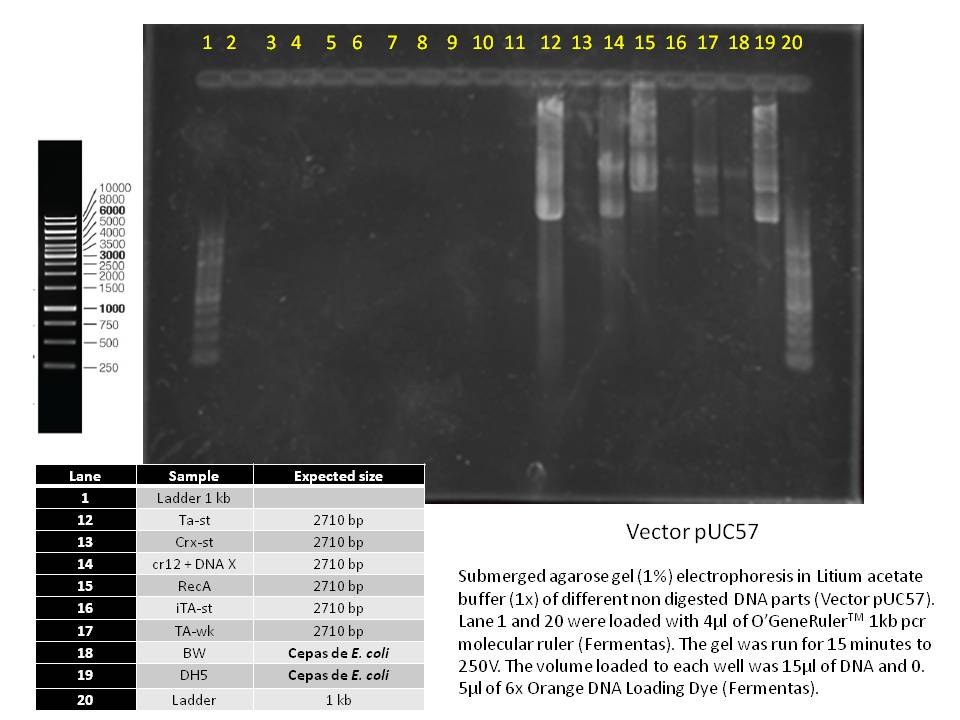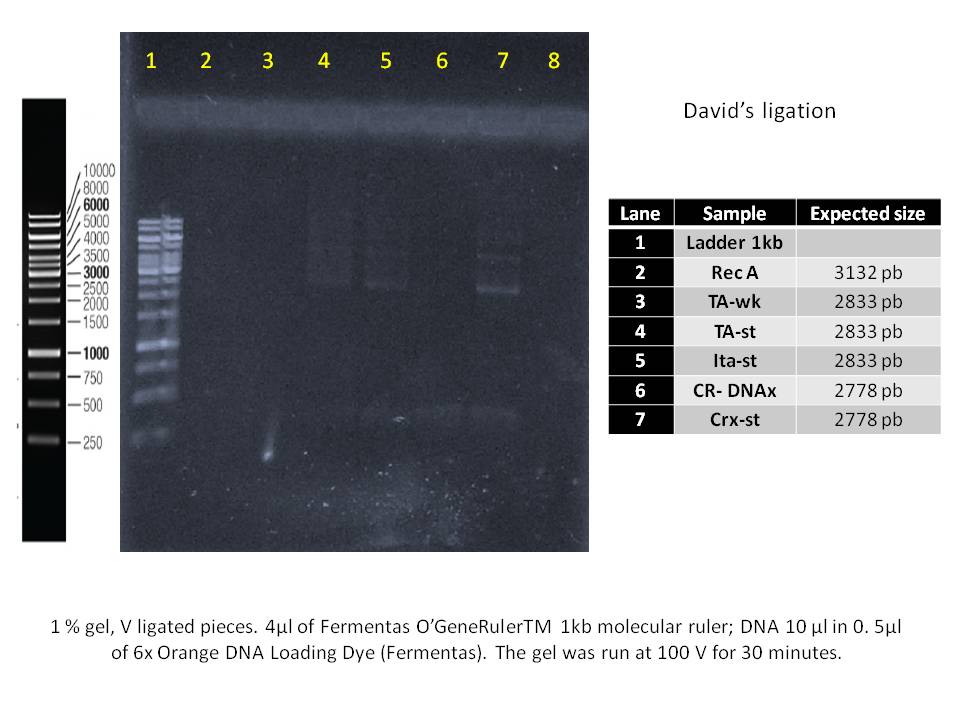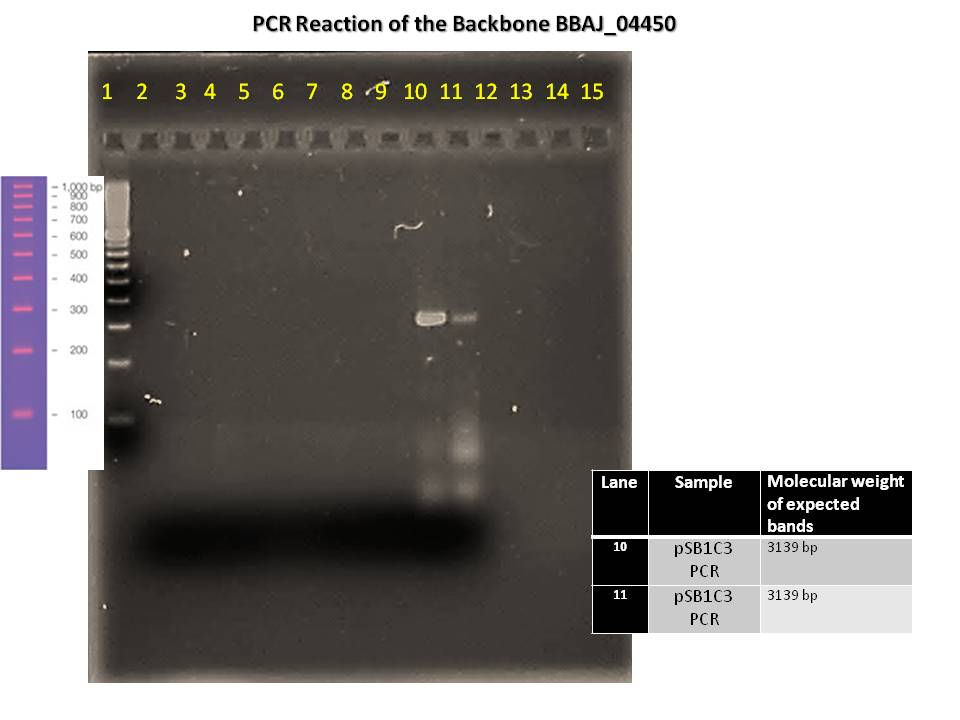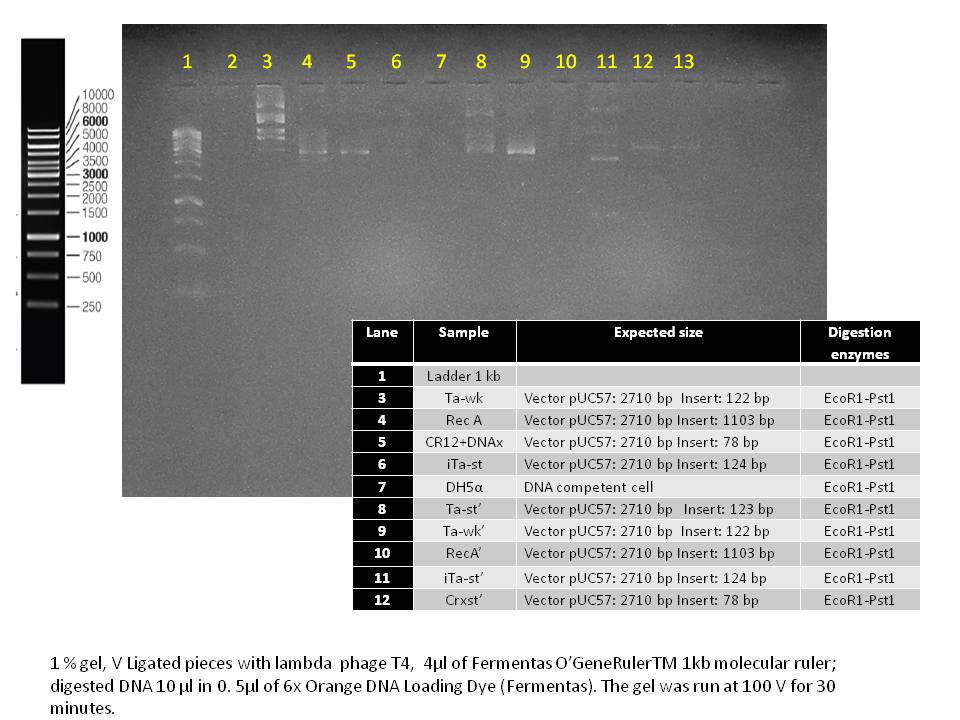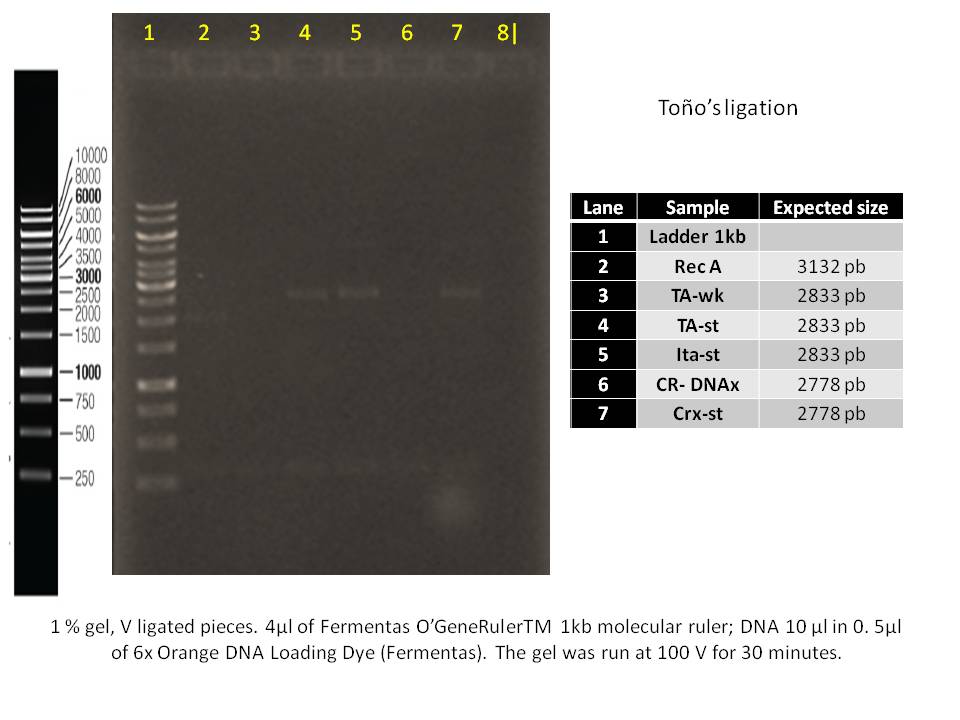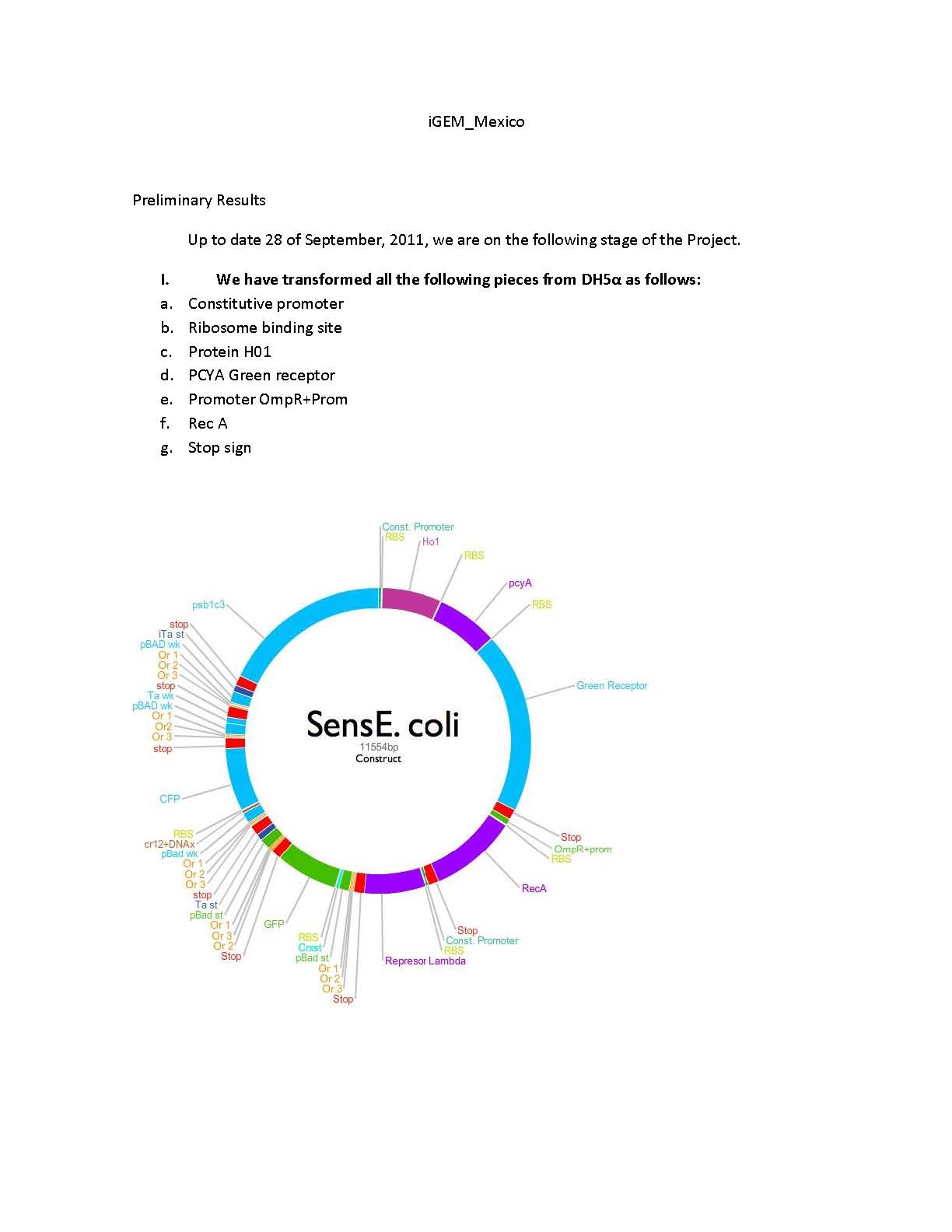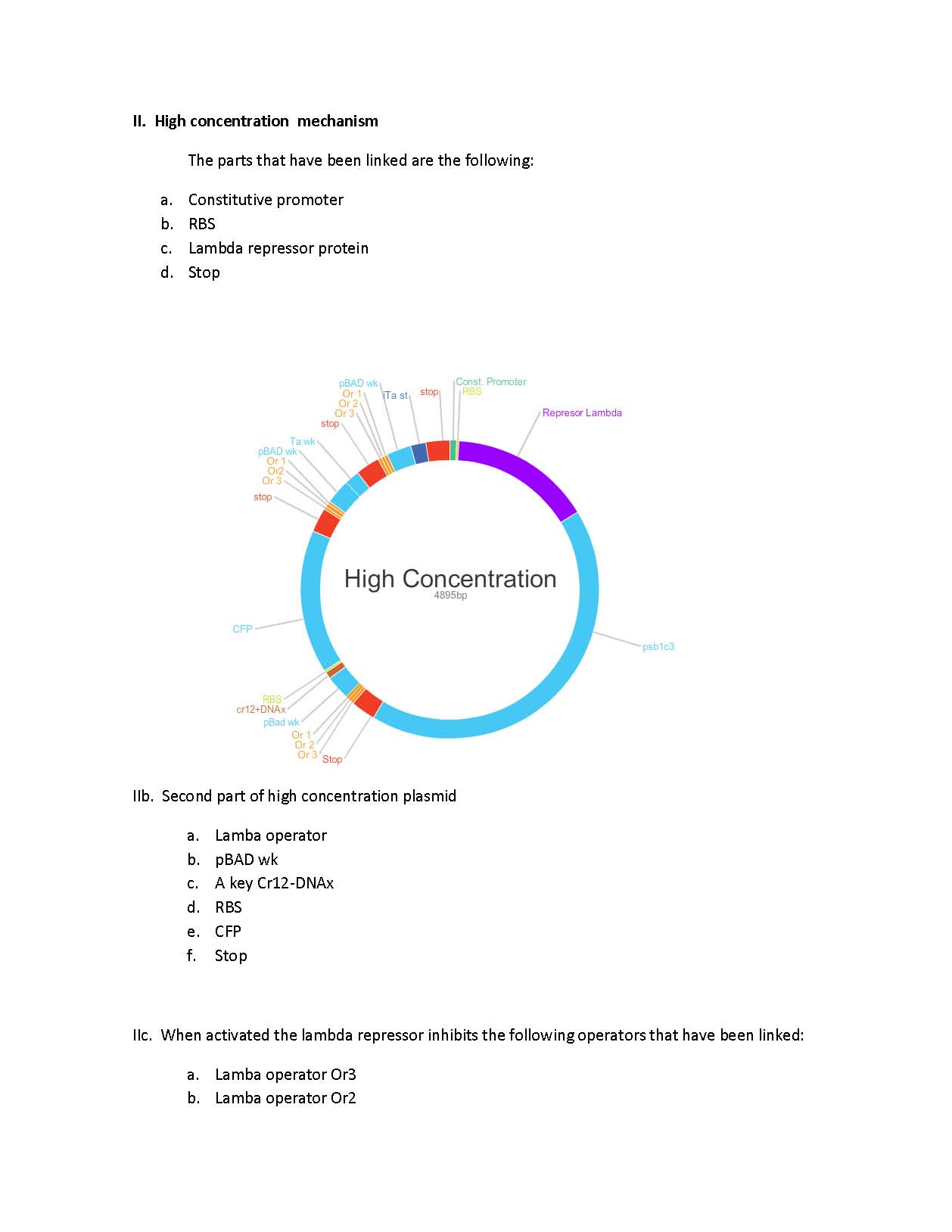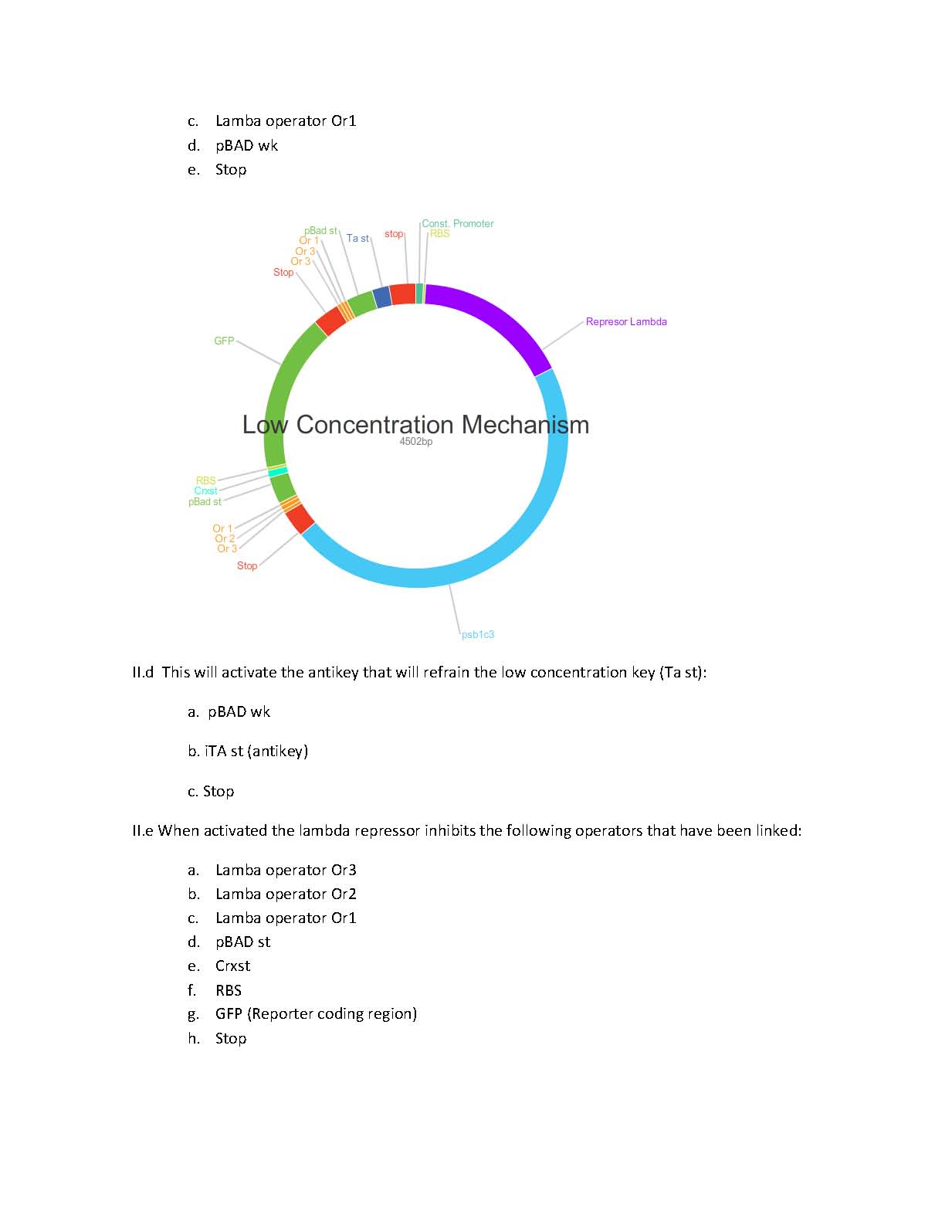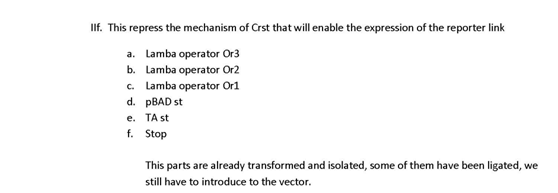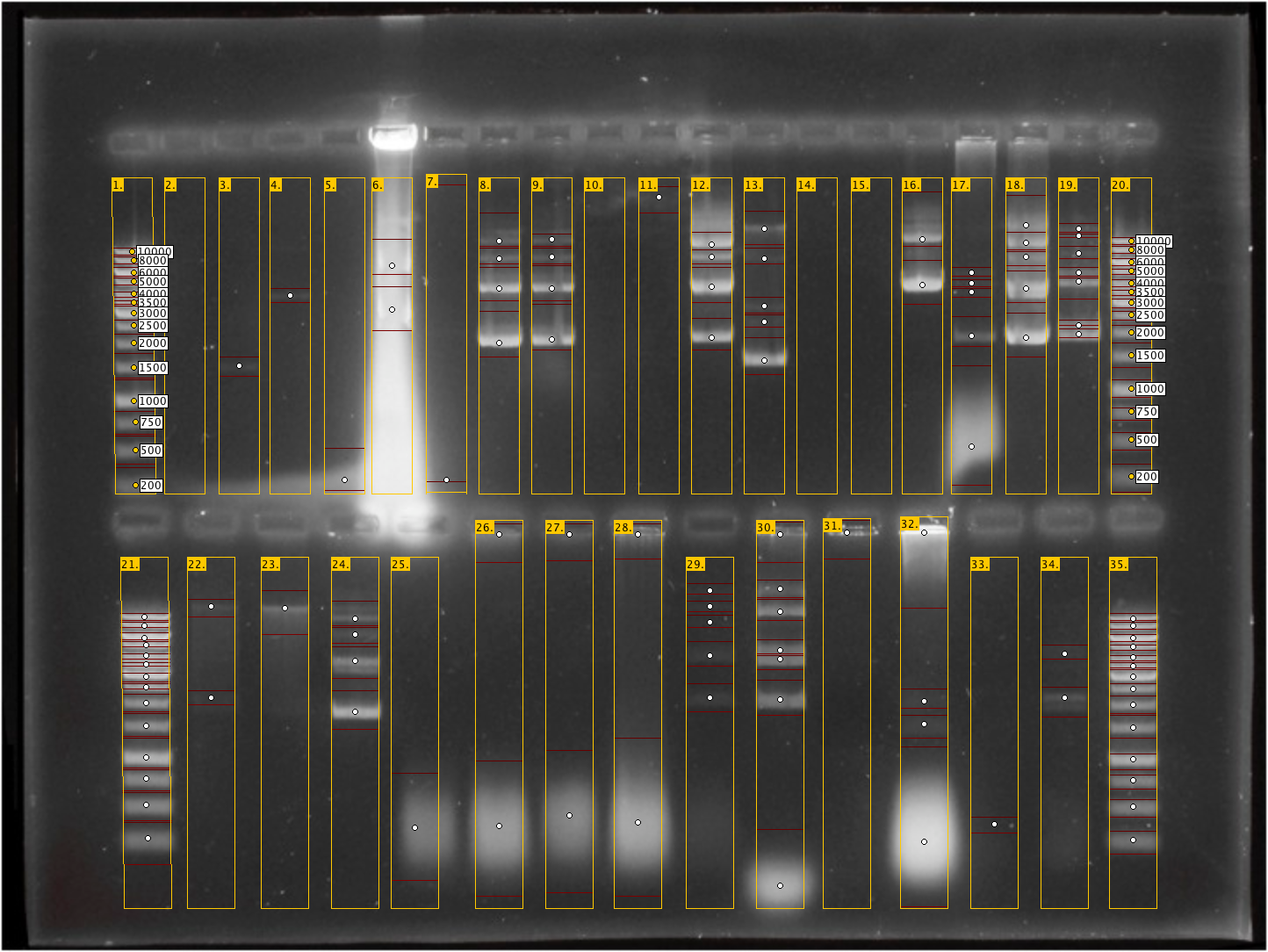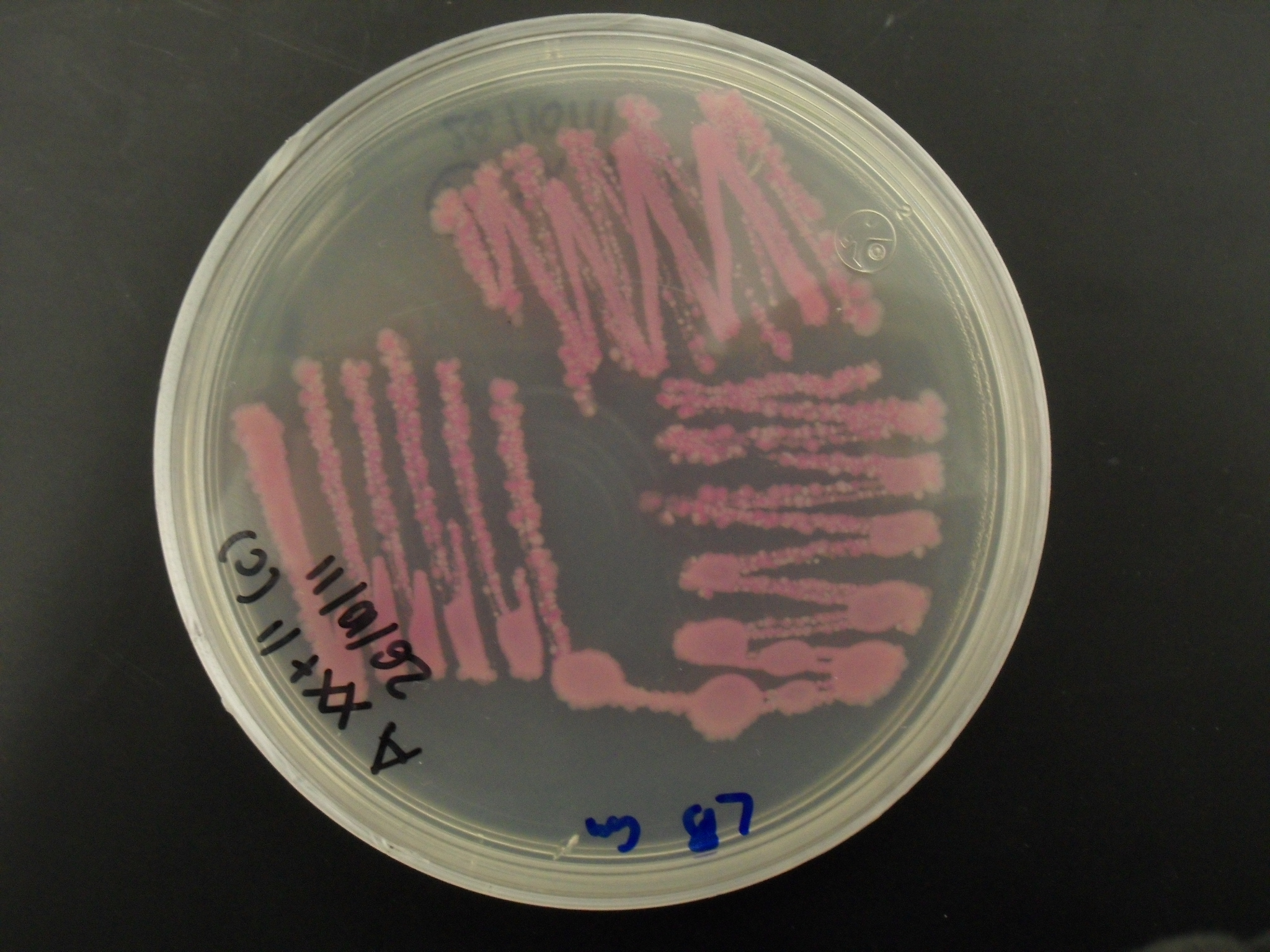Team:ITESM Mexico/Results
From 2011.igem.org
| Line 14: | Line 14: | ||
[[File:IGEM results Página 2.jpg|800px|center]] | [[File:IGEM results Página 2.jpg|800px|center]] | ||
[[File:IGEM results Página 3.jpg|800px|center]] | [[File:IGEM results Página 3.jpg|800px|center]] | ||
| - | [[File: | + | [[File:Page revised 31c.jpg|800px|center]] |
After returning from Indianapolis, the team continued to work as intended, however most of the materials had been already exhausted and the viability of the competent cells was questionable after more than 50 recultures. | After returning from Indianapolis, the team continued to work as intended, however most of the materials had been already exhausted and the viability of the competent cells was questionable after more than 50 recultures. | ||
| Line 29: | Line 29: | ||
| - | Due to the complications | + | Due to the complications post successfull ligation of the parts, we will use two procedures to ensure that the parts are present in the cells: PCR and DNA sequencing. |
Revision as of 03:12, 29 October 2011
Results
After returning from Indianapolis, the team continued to work as intended, however most of the materials had been already exhausted and the viability of the competent cells was questionable after more than 50 recultures. We suspected that after so many recultures the bacteria were no longer competent for transformation; to check this we prepared minipreps in order to review if the pieces were on the cells.
PCR product analysis showing the last status of the parts within the cells. Next image is a description of the gel.
Picture of the last cell culture made on 28/Oct/11 Pink colonies are untransformed bacteria/White colonies are transformed bacteria. Although the number of sucessfully transformed colonies is small, they were picked up and grown in another media.
Due to the complications post successfull ligation of the parts, we will use two procedures to ensure that the parts are present in the cells: PCR and DNA sequencing.
 "
"



